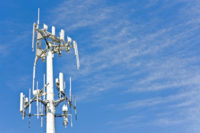 OSHA has released new educational materials on laboratory safety aimed at helping laboratory managers protected their workers from exposure to chemical, biological and physical hazards.
OSHA has released new educational materials on laboratory safety aimed at helping laboratory managers protected their workers from exposure to chemical, biological and physical hazards.
The new materials include the Laboratory Safety Guidance document, which describes how electrical, fire, explosions and falls, among other hazards, can be minimized or eliminated if employers use safety plans, worker training, engineering controls and personal protective equipment. New laboratory safety materials also include fact sheets that each focus on a specific hazard related to laboratory environments. Practices and precautions to protect laboratory personnel include safety guidance for using autoclaves, use of chemical fume hoods, labeling and transferring chemicals, and latex exposure.
Over the past several years, there have been a number of laboratory incidents resulting in fatalities and injuries caused by fires, explosions and equipment. These incidents have resulted in debilitating injuries and death.
"The chemicals and equipment that laboratory workers use present a number of serious, sometimes life-threatening hazards," said Assistant Secretary of Labor for Occupational Safety and Health David Michaels. "These educational materials will help employers identify hazards and measures to ensure safe and healthful conditions for their workers and promote a robust safety culture in the workplace."
OSHA is collaborating with the National Academies on resources to help improve the safety of laboratory workers. OSHA used the original edition of the National Academies' Prudent Practices in the Laboratory manual, the authoritative source on the handling of chemical hazards, as the foundation for the agency's laboratory standard. The manual has since been revised, and the agencies are working together to update the non-mandatory appendices in OSHA's Laboratory Standard (29 CFR 1910.1450) to assure it is consistent with the guidance given in the revised manual.
To order the Laboratory Safety Guidance, please call 1-800-321-OSHA or 202-693-1999.



